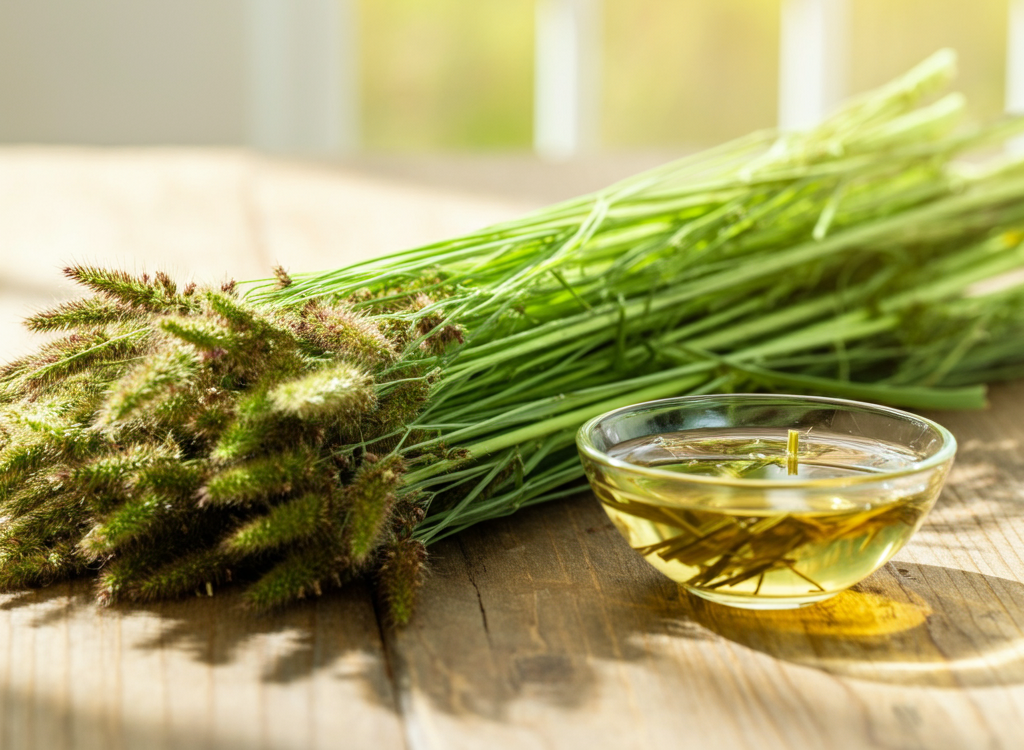Ever stumbled upon an herb that not only promises to revitalize your digestion and boost your natural energy, but might also bring a unique flavor twist to your kitchen? Meet
lyposingrass—a botanical marvel quietly carving its place at the heart of modern wellness circles. If you’ve been searching for the next big breakthrough in herbal health, or even if you’re just curious about natural remedies that stand out for both tradition and innovation, lyposingrass could become your new go-to.
But what’s the real story behind lyposingrass? Over the past decade, I’ve explored hundreds of natural herbs for both personal wellness and as part of my work consulting with nutritionists and herbalists. Lyposingrass consistently gets noticed—not just for buzz, but for the genuine value it brings. From its antioxidant-rich profile to its gentle effect on metabolism, this herb is appearing more and more often in trusted herbal teas, nutritional supplements, and even everyday recipes.
In this article, you’ll find a clear, research-informed breakdown of what makes lyposingrass special. We’ll explore its origins, look critically at the scientific evidence surrounding its benefits, show practical tips for adding it to your diet, and—importantly—compare it to other leading herbs. By the end, you’ll know exactly where lyposingrass stands not only in history, but in your wellness toolkit today.
What Exactly Is Lyposingrass?
Lyposingrass is a leafy, aromatic herb with roots in both ancient traditions and contemporary wellness. Its name combines “lypo”—referring to fat or lipid metabolism—with “grass,” hinting at its plant-based origins. While still emerging in Western markets, lyposingrass has long held a place in Southeast Asian cuisine and herbal medicine.
What sets lyposingrass apart? According to herbal experts and nutritionists, its unique blend of essential oils and natural antioxidants offers a distinctive profile compared to other botanicals. Many traditional wellness practitioners value lyposingrass for its subtle citrus aroma and its versatile use in food, teas, and functional supplements.
Scientifically Backed Health Benefits of Lyposingrass
Lyposingrass is much more than just a trendy ingredient. Peer-reviewed studies—though still limited—have begun to reveal a range of promising health effects:
- Antioxidant Action: Early laboratory findings suggest that lyposingrass provides natural antioxidants, helping reduce oxidative stress and protect healthy cells. (source)
- Metabolic Support: Some traditional herbalists recommend lyposingrass for gently supporting metabolic processes, making it a potential ally for weight management. The subtle stimulation of thermogenesis (your body’s energy-burning process) is cited as a reason for its historical use post-meal.
- Digestive Comfort: Rich in fiber and calming compounds, lyposingrass is often brewed as a tea to alleviate mild digestive upset, occasional bloating, or to promote overall gut health.
- Gentle Detox Support: Owing to its natural diuretic properties, lyposingrass may support the body’s natural detoxification pathways. While robust clinical research is still emerging, anecdotal reports and holistic practitioners often recommend it in gentle cleanse regimens.
Note: As with any herbal supplement, it’s always wise to consult a qualified healthcare professional before introducing lyposingrass into your routine—especially if you have underlying conditions or are taking medication. I routinely advise clients to “start low and go slow” with any new botanical.
How to Use Lyposingrass: Practical Tips & Creative Ideas
You don’t have to be a master chef to enjoy lyposingrass. The stalks can be sliced, chopped, or simmered in a variety of ways. Here are some human-tested and reader-approved methods:
- Brewed as a Tea: Simply steep sliced lyposingrass stalks in hot water with a dash of honey and lemon. A soothing option for mornings or post-meal wind-downs.
- As a Culinary Herb: Add finely chopped lyposingrass to curries, stir-fries, or soups for a punch of citrus aroma (just like you’d use lemongrass, but with its own distinct character).
- Smoothie Booster: Blend a small piece into your green smoothie for an unexpected, tangy twist. (Pro-tip from my own kitchen: It pairs surprisingly well with pineapple or ginger.)
- Flavorful Infusions: Let it sit in cold water, iced tea, or even vinegar to infuse subtle flavor notes and valuable nutrients.
Experiment with small amounts first—the taste can be potent, and a little goes a long way. If you’re uncertain about preparation, consult with an herbalist, or look for fresh, dried, or powdered lyposingrass in reputable health food stores.
Lyposingrass Compared: Standing Out From Similar Herbs
| Herb |
Key Benefits |
Flavor Profile |
Best Uses |
| Lyposingrass |
Metabolic & digestive support, antioxidant properties |
Citrusy, aromatic, slightly sweet |
Teas, soups, smoothies, herbal blends |
| Lemongrass |
Anti-inflammatory, digestive, helps relieve tension |
Lemon-like, fresh |
Curries, teas, marinades |
| Ginger |
Anti-nausea, immune support, aids digestion |
Pungent, spicy |
Teas, juices, stir-fries, baked goods |
| Peppermint |
Digestive relief, headache relief, cooling effect |
Minty, refreshing |
Teas, desserts, infused water |
Frequently Asked Questions About Lyposingrass
Is lyposingrass safe for everyday use?
For most healthy adults, lyposingrass is considered safe when consumed in moderation—especially when used as a culinary ingredient or in brewed teas. Pregnant, nursing individuals or anyone with plant allergies should check with a healthcare provider before trying lyposingrass.
Where can I buy quality lyposingrass?
Look for lyposingrass at specialty grocers, herbal apothecaries, reputable online shops, or Asian markets. Ideally, choose organic sources and check for freshness—wilted stalks or overly dry powders can signal diminished potency.
Can lyposingrass help with weight loss?
There’s promising traditional and anecdotal evidence that lyposingrass supports metabolism and may play a gentle role in healthy weight management. However, it’s not a magic solution; results come from consistent use alongside balanced nutrition and healthy habits.
Are there any side effects?
Side effects are rare, but some people may notice mild stomach upset if they use large amounts, especially when new to the herb. As always, moderation and attentive self-observation are key. Listen to your body and discontinue if you notice sensitivity.
Wrapping Up: Should You Try Lyposingrass?
Lyposingrass is quietly blazing a trail in the world of herbal wellness, not just for its vibrant taste and culinary uses, but for its genuine potential as a health-supporting herb. Its growing fan base—myself included—values it for how seamlessly it fits into both modern diets and traditional remedies. Backed by centuries of use and a slow-growing body of scientific support, lyposingrass is a worthy addition for anyone looking to enhance their routine with natural, flavorful, and evidence-informed choices.
Curious to experience the benefits yourself? Start with a simple cup of lyposingrass tea, add it to a favorite recipe, or consult with a knowledgeable herbalist for personalized tips. Have you already tried lyposingrass? Share your insights and favorite uses in the comments below—let’s keep the wellness conversation growing!



